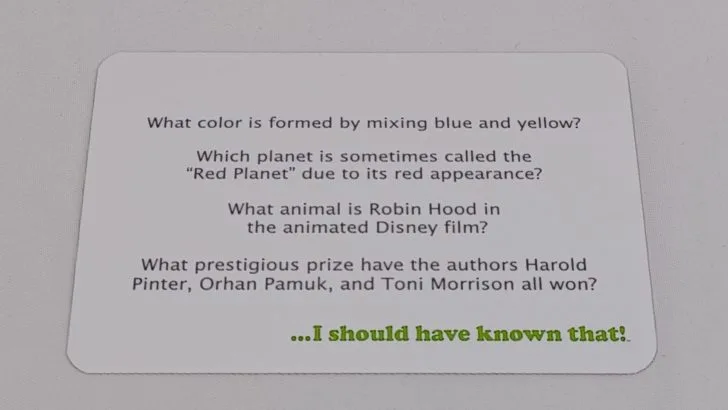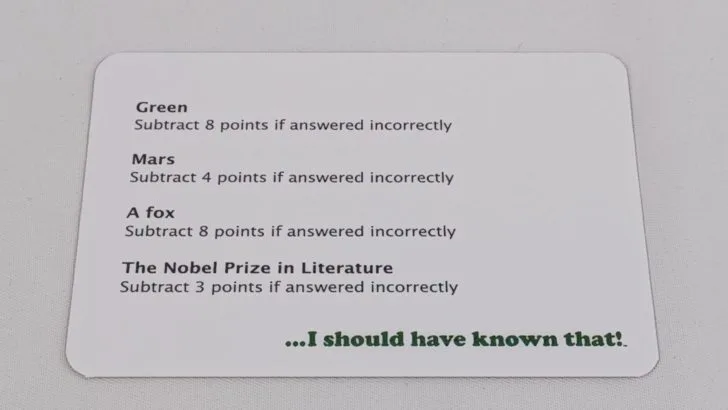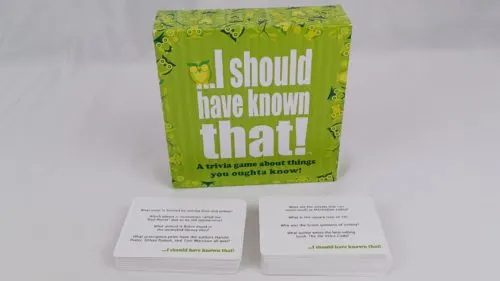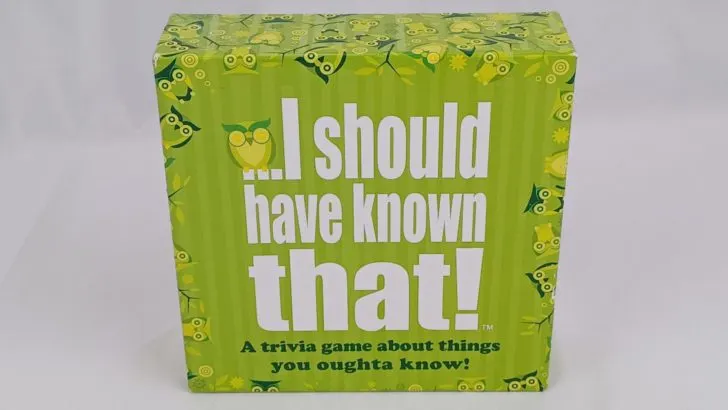Objective of I Should Have Known That!
The objective of I Should Have Known That! is to score more points than the other players by answering trivia questions correctly.
Setup for I Should Have Known That!
- You will choose whether you want to play the game individually or in teams. If playing in teams, the game recommends keeping teams to three players or less.
- Choose one player to keep score.
- Shuffle the cards to mix them up. Lay them on the table so the question side is face up.
- The scorekeeper will take the first turn reading a card. This role will pass to each of the players during the game.
Playing I Should Have Known That!
The game is played in rounds. Each round consists of all of the questions being read on one of the cards. To begin each round the current reader takes the top card from the draw pile. They will hold the card so they can read the questions without the other players seeing the answers on the back of the card.
The player will begin by reading the first question on the card to the player/team on their left. This player/team has the choice of either answering the question or passing.

If a player answers the question the reader will look at the back of the card to verify that the player provided the correct answer. If the player did not give the correct answer, they will lose points equal to the number printed below the answer. The official rules do not specify if anything happens if a player answers correctly.

The current reader then moves onto the next player/team in a clockwise direction (the player/team to the left of the player/team they asked the first question to). They will read the second question to this player/team. After hearing the question, this player/team will decide whether they want to answer the question or pass. If the player/team answers, the result will be handled in the same way as the first question.
This continues until all of the questions on the card have been asked/answered.
The next player than takes the role of reader and draws a new card for the next round.
End of Game
The players can choose a couple different end game conditions:
- You can stop playing whenever players are sick of playing the game.
- You can play for a certain amount of time.
- When one of the players/teams reach a certain amount of points, you can choose to end the game.
To determine the winner, compare the players’/teams’ scores. The player/team that has the lowest score (the highest negative number) loses the game. The player/team with the most points (least negative points) wins the game.
Variant Game
Before you start playing you can decide to play I Should Have Known That! with the variant rules.
In the variant game instead of asking the question to one player/team, all of the players (outside of the reader) will answer each question. Each player/team will write down their answer on a sheet of paper. Each player/team that writes down the wrong answer loses the points printed on the back of the card.
At the end of the game whichever player/team has scored the most points (least negative points) wins the game.

Year: 2011 | Publisher: Hygge Games | Designer: NA | Artist: NA
Genres: Party, Trivia
Ages: 14+ | Number of Players: 2+ | Length of Game: Variable
Difficulty: Light | Strategy: Light | Luck: Light
Components: 110 cards
Where to Purchase: Amazon, eBay Any purchases made through these links (including other products) help keep Geeky Hobbies running. Thank you for your support.

